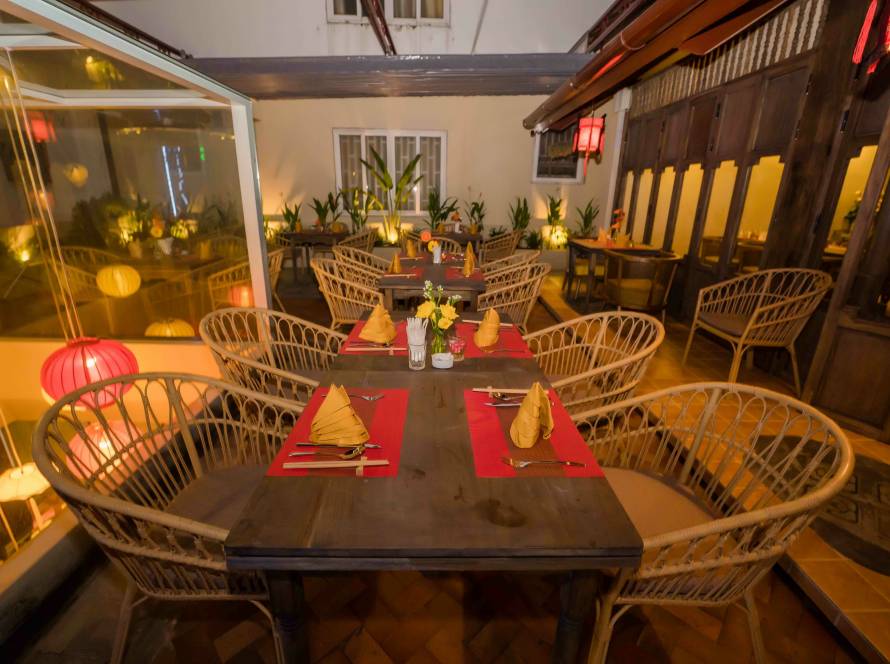How Pham Luc’s Artistic Journey Captures the Essence of Vietnam
Painting is more than a profession for Pham Luc; it is an intrinsic part of his life—a form of exercise for the soul. Born in 1943 in Hue, Luc’s immersion in art began at a tender age when he transformed everyday objects into makeshift brushes and used any available surface as a canvas. As a child, his relentless quest to express himself artistically often led to scoldings from neighbors whose walls became his impromptu canvases. Fortunately, he discovered a wide sandy riverbank near his home, where he painted with tree branches on nature’s own canvas.
Luc’s formative years were profoundly shaped by the tumult of war. After graduating from Hanoi College of Fine Arts (now Vietnam University of Fine Arts), he enlisted as a soldier. Despite his dual role as a fighter and an artist, his commitment to painting never wavered. “The mission of a painter is to record what he observes,” Luc once remarked. “Life is so colorful. I don’t want to miss a thing.” His dedication, however, often came at a cost. He would sometimes miss trains or fall victim to theft, losing precious art supplies amid wartime scarcity. Yet necessity inspired creativity, and Luc repurposed items like sackcloth or hammocks as makeshift canvases, a practice that continues to endear him to admirers today.
Luc’s artistic evolution reflects an eclectic mix of influences. He absorbed techniques from French academic art traditions, Chinese watercolors, and the distinctive styles of renowned Vietnamese painters such as Nghiem, Lien, Sang, and Phai—all graduates of L’École des Beaux-Arts de l’Indochine. This diverse background enabled Luc to blend Eastern and Western styles seamlessly, experimenting with oil paintings, lacquer, silk, and wood engravings.
After his military service, Luc converted various corners of his home into working studios. His approach to painting is instinctive and spontaneous; he immerses himself in his work with minimal premeditation, often guided by the mood of the moment. “Just leave me alone in a room with brushes, colors, and an old radio playing pre-war Vietnamese music, and I’ll work spontaneously, by feeling, without sketches,” he once explained.
Chronic insomnia caused by high blood pressure has been a defining element of Luc’s life, beginning in his teenage years. His sleepless nights often bring a surge of creative ideas, which he quickly translates onto canvas. For Luc, painting is a relief from his headaches, allowing him to transform fleeting nocturnal visions into tangible artworks. Reflecting on his creations the next day often fills him with a sense of wonder and fulfillment.
Luc’s paintings are rich in local color and varied themes, ranging from bustling markets and Tet festivals to traditional performances and historical figures like Thanh Giong and Nguyen Du. Women, in particular, have been a profound source of inspiration. His portrayals of women—whether set in wartime or contemporary contexts—reflect his deep empathy and admiration. This sensitivity not only enriches his art but also played a role in his personal life. He found love with a French admirer of his work, who later became his wife. Her unwavering support helped Luc’s art gain international recognition and expand his audience.
Among contemporary Vietnamese artists, Pham Luc is unique in having a dedicated fan club that actively collects and showcases his work.
His paintings are held in private collections around the world, and his art has been the focus of numerous successful exhibitions. Notably, Australian art collector Tony Olive hosted a highly successful exhibition in 2009 featuring Luc’s paintings, all of which sold out. Olive later regretted parting with so many pieces and negotiated to repurchase several.
Thomas J. Vallely, Director of the Harvard Vietnam Program, has expressed profound admiration for Luc’s work. In a recent interview with writer Nguyen Ngoc, Vallely cited Luc’s studio as his favorite place in Vietnam, praising the cultural and historical depth conveyed through the artist’s diverse themes. Vallely regards Luc’s creations as a universal expression of the human condition, transcending Vietnamese culture to explore broader themes of war, struggle, and resilience.




